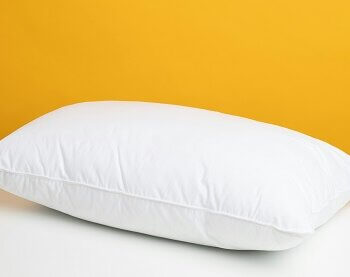
UK: Surface decoration, line drawings and CADs in Community design registrations – a review
22 August 2014, London
One of the issues which has arisen repeatedly in English design cases in recent years, but still remains unsettled, is how the presence of colour(s), shading, patterns and even logos (i.e. surface decoration) on either the design registration or indeed the allegedly infringing design itself should be treated when assessing infringement and how such surface decoration should be represented in design registrations.

One of the first cases to have addressed the issue of surface decoration was Procter & Gamble.[1] In this case, the registered design was for a spray canister depicted as a series of black and white line drawings (one of which is pictured above), rather than by way of a depiction of the claimant’s actual air freshener product (complete with labels, logos, etc). It was accepted by the court that, by filing the design as a black and white line drawing, colour did not form any part of the protected design, which was limited to the shape of the canister alone.
The key question was whether the infringement comparison should be (i) between the registered design and the design of the defendant’s actual product (i.e. complete with its surface decoration); or (ii) between the registered design and the design of the defendant’s product shorn of such surface decoration. The court held that the latter comparison was correct: where the design registration simply depicts the shape of the product (i.e. without any surface decoration or colour), it should be compared with the defendant’s design stripped of any surface decoration.
A slightly different issue faced the court in Apple[2] however. Here again the registered design was a black and white line drawing of a tablet, a representation of which is shown below. When characterising its design, Apple contended that a feature of it was “a flat transparent surface without any ornamentation…”

“There are distinct advantages to both line drawings and CAD drawings as means for rendering designs for registration and both should continue to be considered as potentially useful tools in the creation of an effective registered design portfolio.”
One question with which the court had to grapple was the effect of the presence of the Samsung logo which was prominently positioned on one surface of Samsung’s tablet design. Ordinarily, one might expect the presence of a logo on an infringing design to be disregarded from the assessment of overall impression, on the basis that the informed user would be well used to seeing logos on products and discount them accordingly. The Court of Appeal however took the view that because the lack of ornamentation was a key feature of Apple’s registered design, the fact that Samsung’s design prominently featured ornamentation had to be regarded as a point of difference between the respective designs. It did not matter that the ornamentation in question happened to be a logo. This might therefore be regarded as a modification of the Procter & Gamble principle: in certain (arguably very specific) circumstances, surface decoration present on an allegedly infringing design can be taken into account even when surface decoration did not form part of the registered design.
Most recently, the issue of surface decoration arose in the Trunki case.[3] Magmatic’s registered design was for a child’s ride-on suitcase in the shape of a horned animal and was depicted using by a series of CAD drawings, one of which is shown below on the left.

The Court of Appeal felt that the surface decoration in the form of, for example, the stripes and whiskers significantly affected how the shape struck the eye and so contributed to the overall impression created by it, which was in this instance a tiger and plainly not a horned animal (being the impression created by Magmatic’s registered design). The defendant’s (PMS) designs were also for a child’s ride on suitcases in the shape of various animals and featured prominent surface decoration, such as the stripes and whiskers found on the tiger design above on the right. At first instance, the High Court took the view (following the principle set out in Procter & Gamble) that the correct comparison was between the registered design, which protected the shape of the product only, and the PMS’ design shorn of all of its surface decoration. On this basis, the court held that the designs created the same overall impression and Magmatic’s design was infringed.
The Court of Appeal found that the High Court judge had erred in two important respects. Firstly, the judge was wrong to disregard altogether the surface decoration of PMS’ design.
Secondly, the judge erred by failing to appreciate that there were aspects of surface decoration in Magmatic’s registered design, even though it was monochrome and so not limited to any particular colours. The Court of Appeal noted that there was a distinct contrast in the shading used, for instance, between the wheels and the body of the case, which represented an (unspecified) colour contrast between these components. As PMS’ design did not have such a colour contrast, this was a point of distinction between the respective designs which the judge had failed to take into account.
Based on these oversights, the Court of Appeal considered it free to form its own opinion and found that the designs did not create the same overall impression, overturning the judge’s finding of infringement.
This decision has sparked significant disappointment in the design community for two reasons. Firstly, after a series of high profile findings of non-infringement (Procter & Gamble, Dyson,[4] Apple), the first instance decision in Trunki was warmly welcomed by design owners who had understandably (although probably unfairly) started to regard the English courts as being anti-design. Secondly, it was widely accepted that the Trunki design was revolutionary in its field and had proven to be hugely successful, leaving some to wonder how the English courts could green light what many perceived to be a blatant copycat product.
Doubt raised over the use of CAD
The decision has also led to some commentary on strength of registered designs depicted using CAD drawings. It has long been accepted that if a designer wishes to protect their design against copycat products of any colour, the best approach (barring registering the design in each colour separately) is to register the design either as a black & white line drawing, or increasingly more commonly, as a monochrome CAD drawing. It has been suggested that the Court of Appeal’s decision in Trunki casts doubt on the use of CAD drawings for this purpose and that designers should instead revert to the use of simple line drawings which offer a broader scope of protection. This has obviously led to significant concern amongst design owners who have historically used CADs.
Arguably, this warning against the use of CAD drawings in registered design filings is premature until the courts give clearer guidance on the issue. The Court of Appeal in Trunki was not criticising the use of CAD drawings per se. Rather, it was simply saying that the specific CAD drawings which happened to have been used in Magmatic’s registered design showed a prominent (unspecified) colour distinction between various components. Had Magmatic avoided this colour distinction, as it could easily have done, then the point would not have arisen and the Court of Appeal may possibly have found in its favour.
It therefore remains the case that CAD drawings can offer some real advantages over line drawings. It is for instance often difficult to accurately and unambiguously depict design features such as curvature, gradient or light reflection using simple line drawings. It is also much easier to add crucial detail using CADs and CADs are by their very nature easily manipulated so that designs can be shown in the best possible way.
It is also worth treating the proposition that ‘the broader the design, the better’ with some caution. Notwithstanding the fact that the broader the registration the more likely it is to be invalid, the ‘best’ design registration is the one that is most likely to be found infringed by a competitor’s design which may not necessarily be the ‘broadest’ one. For instance, a simple black and white line drawing, with its limited detail, will likely be ‘broader’ than the counterpart CAD drawing, but this will not be advantageous to the design owner if the necessary similarity to support a finding of infringement in fact resided in the very detailing which was missing from the line drawing.
Conclusion
There are distinct advantages to both line drawings and CAD drawings as means for rendering designs for registration and both should continue to be considered as potentially useful tools in the creation of an effective registered design portfolio.
[1] Procter & Gamble Co v Reckitt Benckiser (UK) Ltd [2007] EWCA Civ 936
[2] Samsung Electronics (UK) Ltd v Apple Inc [2012] EWCA Civ 1339
[3] Magmatic Ltd v PMS International Ltd [2014] EWCA Civ 181
[4] Dyson Ltd v Vax Ltd [2011] EWCA Civ 1206
Originally published in DesignWrites 4th Edition.








